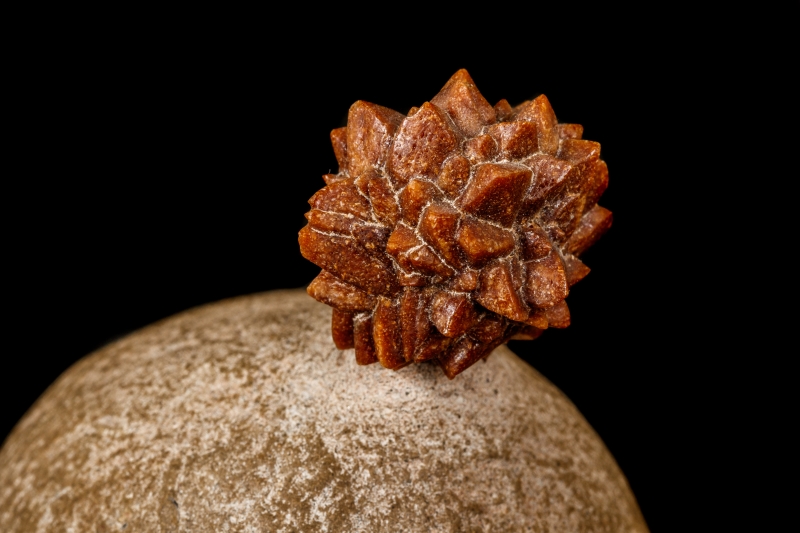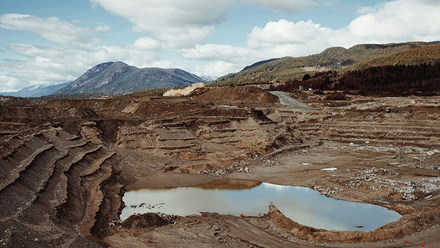Synthesising mineral ikaite to store carbon dioxide
Dr Michael Ford MIMMM at Haseltine Lake Kempner explores a patent for permanent storage of CO2 by ikaite formation

Carbon capture and storage (CCS) refers to processes in which carbon dioxide, derived predominantly from industrial sources, is separated from other gases, treated and transported for long-term storage. CCS is seen as an important tool available to industry to reduce its carbon footprint and thus its contribution to global warming and ocean acidification.
However, there are problems associated with existing CCS technologies that remain to be solved. For instance, some projects fail to achieve the desired (typically at least 90%) carbon capture efficiency. In addition, there are concerns that captured CO₂ stored underground in deep geological formations – such as depleted oil and gas reservoirs or un-minable coal beds – could leak back into the atmosphere, and that the sequestration process itself requires significant amounts of energy.
As an alternative to storing carbon underground, the chemical conversion of captured CO₂ into mineral carbonates has been proposed. One such method is described in European patent EP3787774B1 Permanent storage of carbon dioxide, which was granted to Climate Solutions ApS in July 2023.
The patent claims protection for a method of preparing the mineral ikaite (CaCO₃·6H₂O) using an alkaline aqueous solution prepared by supplying gaseous CO₂ to a carbonate solution. The alkaline aqueous solution treated in this way contains both carbonate and bicarbonate ions. The patented method involves contacting the treated alkaline aqueous solution with a water solution containing Ca2+ at a temperature not exceeding 15°C, in such a way that contact between the alkaline aqueous solution and the water solution takes place at a permeable or porous surface.
The alkaline aqueous solution is fed to the water solution, or the water solution is fed to the alkaline aqueous solution, through the permeable or porous surface at a flow rate that is controlled so as to facilitate formation of ikaite crystals. The patent also claims protection for a related method of storing/reduding carbon dioxide and a system for preparing ikaite.
Ikaite is an hydrated mineral form of calcium carbonate that is found in unique tufa columns in Ikka Fjord in Southwestern Greenland.
According to the patent, synthetic ikaite has previously been produced in the lab, but only with low yields, small crystal sizes (on the order of 20-100µm) and time-consuming processes – sometimes taking weeks or months to crystallise the mineral. The inventors, however, appear to have developed a method for producing ikaite that is simple, cheap and fast, and which enables greater yields of larger crystals (some greater than 2mm).
Ikaite (which is a relatively volatile substance) can also be converted to more stable forms of calcium carbonate, such as calcite, by simple dehydration at relatively low temperatures. Calcite has a wide range of industrial applications and can be used in construction materials, paints, or as a soil remediator.
According to the patent, both ikaite formation and transformation to calcite are low-energy processes, making the patented method suitable for use in energy-efficient and long-term carbon dioxide sequestration.
The inventors posit that establishing a steady or quasi-steady interface zone between the alkaline aqueous solution and the water solution provides a surface on which crystals can be seeded and grown, in contrast to methods in which solutions are simply mixed together. Control of the feeding rate also avoids wasting reactants by maximising ikaite formation.
In preferred embodiments, the carbonate solution is a sodium or potassium carbonate solution, the alkaline aqueous solution contains sodium carbonate and sodium bicarbonate, and the water solution is natural seawater. When forming the alkaline aqueous solution by contacting CO₂ and the carbonate solution, use of a separate base or strong secondary buffers can avoid excessive reductions in the pH.
Although use of natural seawater is preferred due its abundant availability, the salinity of the water is of lesser importance to the invention than the basic pH and presence of Ca2+ ions.
The exact form and composition of the permeable or porous surface is also not considered to be essential to the invention, and the patent describes various possible surfaces, including those of porous rock, stone or ceramic, a metal, rubber or plastic surface comprising multiple perforations, or a membrane material.
The patent also states that any other material or structure can be used if it has a sufficiently high hydraulic conductivity to allow a liquid to be fed through the surface to contact with the other solution.
The temperature is not permitted to exceed 15°C because, according to the scientific literature, ikaite crystallises below this temperature.
The patent is available in full online.







